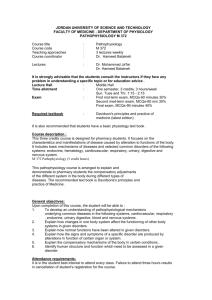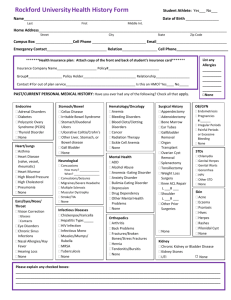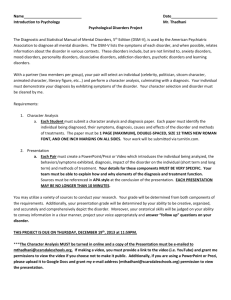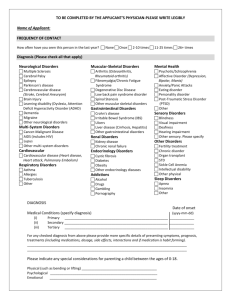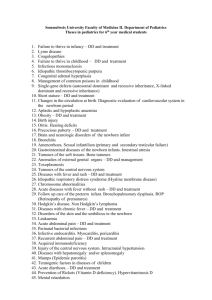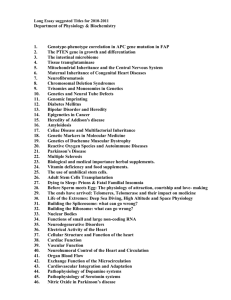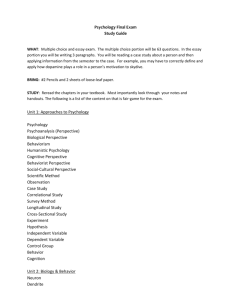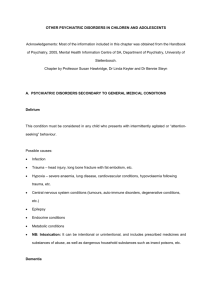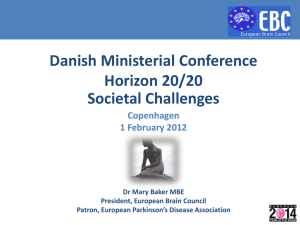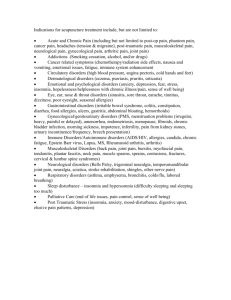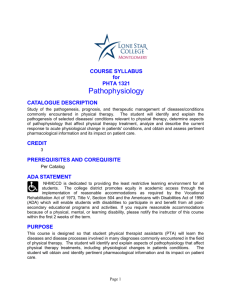AMS_PowerPoint_Pathophysiology_e
advertisement
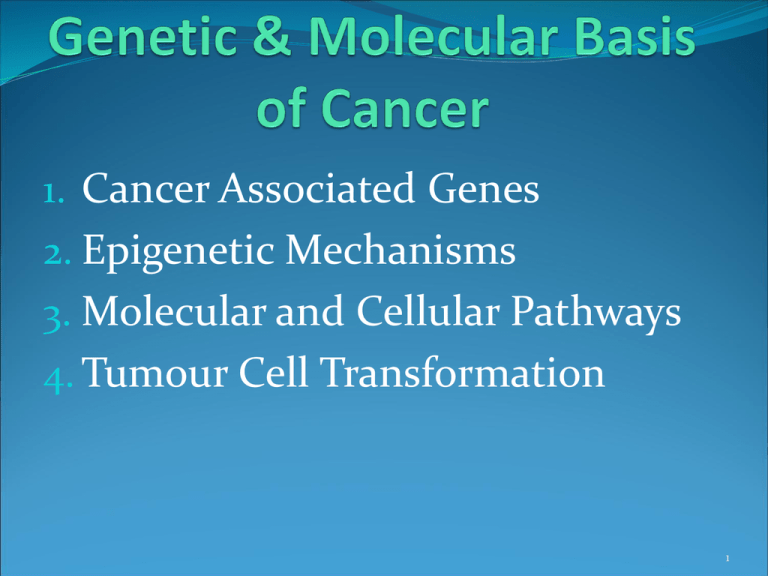
1. Cancer Associated Genes 2. Epigenetic Mechanisms 3. Molecular and Cellular Pathways 4. Tumour Cell Transformation 1 Porth, C.M. 2011. Essentials of Pathophysiology, 3rd Edn. 2 Porth, C.M. 2011. Essentials of Pathophysiology, 3rd Edn. 3 1. 2. 3. 4. 5. 6. 7. Heredity Hormones Obesity Immunologic Mechanisms Chemical carcinogens Radiation Viral and microbial agents 4 1. Anorexia and Cachexia 2. Fatigue and Sleep Disorders 3. Paraneoplastic Syndromes 5 1. 2. 3. 4. 5. 6. Describe the phases of cell cycle. Differentiate between cell proliferation and cell differentiation. Cancer is a disorder of altered cell __________ and _________. Malignant tumours are less well _____________ and have the ability to break __________, enter the _______________ or _______________ systems and form secondary malignant tumours at other sites. Compare and contrast benign tumours and malignant tumours. What is paraneoplastic syndrome? 6 Genetic disorders are inherited as autosomal dominant disorders, in which each child has a 50 percent chance of inheriting the disorder, or as autosomal recessive disorders, in which each child has a 25 percent chance of being affected, a 50 percent chance of being a carrier, and a 25 percent chance of being unaffected. 2. Sex-linked disorders almost always associated with the X chromosomes and are predominately recessive. 3. Chromosomal disorders reflect events that occur at the time of meiosis and result from defective movement of an entire chromosome of from breakage of a chromosome with loss or translocation of genetic material. 1. 7 1. Single defective or mutant gene. 2. Lead to formation of an abnormal protein or decreased production of a gene product. 3. The disorder can result in a defective enzyme, defects in receptor proteins and their function or mutations resulting in unusual reactions to drugs. 8
